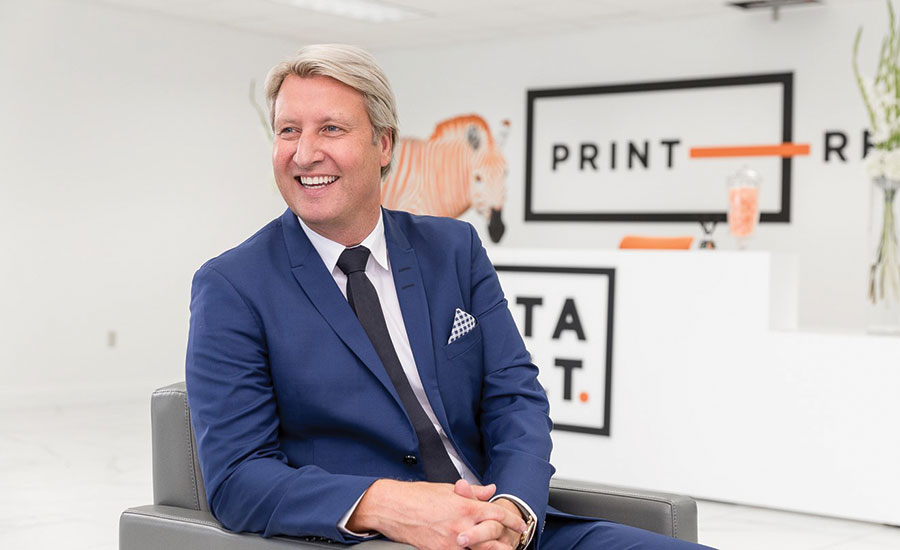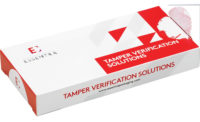Though Catapult officially just opened its Orlando, Florida, operations in spring 2018, the flexo print company is quick to point out that its business, while new, is actually some 25 years in the making.
“We’ve been operational since the end of May but we’ve been in planning mode for several months and have had ambitions for this business for much longer than that,” says Mark Cook, Catapult CEO.
It’s Cook’s ambitions that led him to this new challenge of overseeing Catapult after a lengthy career in the industry thus far. He’s driven by his past success as a director at Paragon Print and Packaging, and then with Equator, a packaging design agency eventually acquired by SGK in 2017. Now Cook is helming Catapult, and he’s striving to disrupt the U.S. packaging and print market.

“We have a vision to create a unique, customer-focused business that will force change across the U.S. print industry,” he says. “Our team is aligned with this vision and will go out of its way to understand and deliver on our clients’ needs. We understand the pace of the market, as well as its specific demands. It’s called ‘fast-moving’ for a reason, and so as a business, our service has to be equally agile and responsive to match the requirements of our customers.”
One unique facet of Catapult’s workforce is that the majority of its employees come from a design background.
“This experience has afforded us the insight into how it feels to wear the client’s jacket, so we understand the frustrations of being let down at the final hurdle by a substandard print job,” Cook says. “We’ve experienced first-hand the pain points felt by manufacturers, suppliers and the buyers themselves, so we know how to remedy issues and deliver solutions.”
Core Capabilities
Self-adhesive. Narrow web. Linerless labeling.
Those are the three core services that Catapult specializes in, and it has invested the money to do it. Inside of its 56,000 square-foot facility, you’ll see Esko’s XPS Crystal CDI, Hamillroad Software’s Bellissima Digitally Modulated Screening (DMS) and photopolymer plate technology from MacDermid. A pair of FA Nilpeter presses and GTT anilox from Apex are also part of the company’s equipment makeup.
“We believe in having a very focused approach to deliver the best possible result,” Cook says. “Many companies want to do everything and anything, often brokering it out, adding no value – just cost. We want to ensure we focus only in the areas we can truly make a big difference to our customers.”
Catapult’s investment in anilox technology has been significant. And being that it performs all of its plate-making in house, Cook says the company is able to better control the process and deliver orders faster. He adds the Bellissima DMS software is able to give flexo offset-like quality.
“We have been able to produce magazine-quality print, holding 0.8 percent dot,” he says. “Also, conventional flexo normally ranges between 150 LPI to 175 LPI, whereas Bellissima is coming through at around 350 LPI. This technology allows the imagery to really pop, so the product looks incredibly appetizing and indulging for the customer.”
What’s more, Cooks says Catapult is one of only three U.S. printers that produces linerless labels. Benefits of linerless labels include up to a 30 percent cost savings over self-adhesive labels, less waste due to no backing paper, ability to put more labels on a roll, a larger overall label and tamper-proof properties.
“Everyone seems to want to make it harder, not easier,” Cook says. “Lead times, cost, service and innovation all seem to be 10 years behind the U.K., along with a lack of understanding of the customer requirements. The industry is tipped towards suiting the needs of the printer, whereas we are focused on delivering for the customer. We had a client in the office (recently) that told us they had to put packaging on the shelf that was poor and looked nothing like the designs. When challenged, the printer said it was a plate problem and would take two weeks to rectify. That’s shocking when it only takes an hour or so to remake the plates. We feel there should be much more honesty in the sector and a bit more ‘can do’ than ‘can’t do.’”
Currently, Catapult is primarily working to serve clients in the food, beverage, health and beauty markets. Though its doors have only been open for a few months, Cook says the company has been busy with orders and has gotten off to a promising start.
“Things are changing in the U.S. retail food space,” he says. “Amazon’s entry to the sector along with the explosion of the private-brand model has made it a very competitive marketplace. Online shopping has forced a step change in the bricks and mortar offer, forcing a rethink by the industry in terms of driving footfall to stores. Catapult can offer retailers, brands and manufacturers a print solution that allows them to best showcase their own-label products on the shelf. It’s a vision that’s anchored in our experience of the U.S. and U.K. design and print industries, and is focused on leveraging that understanding to answer our clients’ needs with a creative printing business.”




